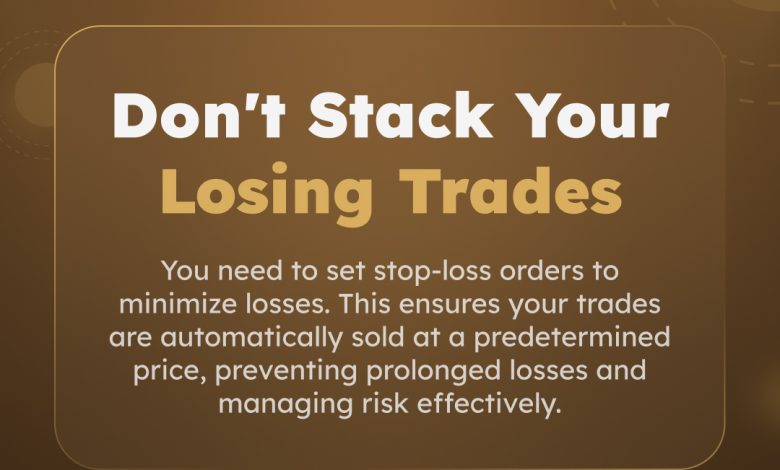How to Use Stop-Loss Orders to Protect Your Investments

- Understanding stop-loss orders and their importance in investing
- Setting up stop-loss orders to minimize losses in volatile markets
- Determining the right stop-loss percentage for your investment strategy
- Exploring the benefits of using stop-loss orders in your portfolio
- Common mistakes to avoid when using stop-loss orders
- Tips for effectively implementing stop-loss orders in your investment plan
Understanding stop-loss orders and their importance in investing
Understanding stop-loss orders is crucial for investors looking to protect their investments in the stock market. A stop-loss order is a type of order that investors can place with their broker to automatically sell a security when it reaches a certain price. This helps investors limit their losses and manage risk in their investment portfolios.
Stop-loss orders are important because they can help investors avoid emotional decision-making during times of market volatility. By setting a predetermined price at which they are willing to sell a security, investors can take the emotion out of the equation and stick to their investment strategy. This can help prevent investors from making impulsive decisions that could negatively impact their long-term investment goals.
Additionally, stop-loss orders can help investors protect their gains in a rising market. By setting a stop-loss order at a price above their purchase price, investors can lock in profits and prevent a winning trade from turning into a losing one. This can help investors capitalize on market trends and maximize their returns.
Setting up stop-loss orders to minimize losses in volatile markets
Setting up stop-loss orders is a crucial strategy to protect your investments, especially in volatile markets. These orders automatically trigger a sale when a stock reaches a certain price, helping you minimize potential losses. Here are some tips on how to effectively use stop-loss orders:
- Set your stop-loss order at a reasonable percentage below the current market price. This will give your investment some room to fluctuate without triggering a sale too soon.
- Consider the volatility of the stock when setting your stop-loss order. More volatile stocks may require a wider percentage range to account for their price swings.
- Regularly monitor and adjust your stop-loss orders as the market conditions change. What may have been an appropriate percentage a few weeks ago may no longer be suitable.
- Avoid setting your stop-loss order too close to the current market price, as this could result in unnecessary sales triggered by minor fluctuations.
- Remember that stop-loss orders are not foolproof and may not always protect you from significant losses, especially in fast-moving markets. Use them as part of a broader risk management strategy.
Determining the right stop-loss percentage for your investment strategy
Determining the appropriate stop-loss percentage for your investment strategy is a crucial step in safeguarding your investments from significant losses. It is essential to strike a balance between setting a stop-loss percentage that is too tight, leading to premature selling, and one that is too loose, exposing you to excessive risk.
One approach to determining the right stop-loss percentage is to consider the historical volatility of the asset you are investing in. Assets with higher volatility may require a wider stop-loss percentage to account for price fluctuations, while less volatile assets may necessitate a tighter stop-loss percentage.
Another factor to consider when setting your stop-loss percentage is your risk tolerance. If you are more risk-averse, you may opt for a tighter stop-loss percentage to minimize potential losses. On the other hand, if you are comfortable with taking on more risk, you may choose a looser stop-loss percentage.
Additionally, it is essential to consider the overall market conditions and any external factors that may impact the performance of your investment. Economic indicators, geopolitical events, and industry-specific news can all influence the movement of asset prices, prompting you to adjust your stop-loss percentage accordingly.
Ultimately, the right stop-loss percentage for your investment strategy will depend on a combination of factors, including the asset’s volatility, your risk tolerance, and external market conditions. By carefully evaluating these factors and regularly reassessing your stop-loss strategy, you can better protect your investments and optimize your overall portfolio performance.
Exploring the benefits of using stop-loss orders in your portfolio
Implementing stop-loss orders in your investment portfolio can provide numerous advantages and help protect your assets from significant losses. By setting predetermined price levels at which you are willing to sell an asset, you can limit your downside risk and prevent emotional decision-making during market fluctuations.
One of the key benefits of using stop-loss orders is that they help you manage your risk effectively. By establishing a clear exit strategy for each trade, you can minimize potential losses and preserve your capital. This risk management tool is especially useful in volatile markets where prices can change rapidly.
Additionally, stop-loss orders can help you maintain discipline and stick to your investment plan. By automating the selling process based on predetermined criteria, you can avoid making impulsive decisions driven by fear or greed. This can lead to more consistent and rational trading behavior over time.
Another advantage of incorporating stop-loss orders in your portfolio is that they can help you reduce the time and effort required for monitoring your investments. Instead of constantly watching the market, you can set your stop-loss levels and let the orders execute automatically when the price reaches a certain point.
Overall, utilizing stop-loss orders can be a valuable strategy for protecting your investments and improving your overall portfolio performance. By implementing this risk management tool effectively, you can enhance your trading discipline, minimize losses, and focus on long-term investment goals.
Common mistakes to avoid when using stop-loss orders
When using stop-loss orders to protect your investments, it is crucial to avoid common mistakes that could potentially harm your portfolio. Here are some key errors to steer clear of:
- Setting stop-loss orders too close to the current price can result in unnecessary triggering of the order due to market volatility. It is essential to give your investments some breathing room to account for normal price fluctuations.
- Not adjusting stop-loss orders as the market conditions change can lead to missed opportunities or increased losses. Regularly review and update your stop-loss levels based on the latest market trends and your investment goals.
- Relying solely on stop-loss orders without considering other risk management strategies can leave your portfolio vulnerable to unexpected market events. Diversifying your investment portfolio and using a combination of risk management tools can provide added protection.
- Ignoring the overall trend of the market when setting stop-loss orders can result in premature selling of assets that could have rebounded in the long run. Take into account the broader market context and adjust your stop-loss levels accordingly.
- Setting stop-loss orders based on emotional reactions rather than a well-thought-out strategy can lead to impulsive decision-making and potential losses. Stick to your predetermined investment plan and avoid making hasty changes based on fear or greed.
Tips for effectively implementing stop-loss orders in your investment plan
When it comes to effectively implementing stop-loss orders in your investment plan, there are several key tips to keep in mind. By following these guidelines, you can help protect your investments and minimize potential losses.
- Set a realistic stop-loss percentage: It’s important to determine a stop-loss percentage that aligns with your risk tolerance and investment goals. Avoid setting it too tight, as this could trigger unnecessary selling, or too loose, which may result in significant losses.
- Regularly review and adjust your stop-loss orders: Markets are constantly changing, so it’s crucial to regularly review and adjust your stop-loss orders as needed. This will help ensure that your investments are adequately protected in different market conditions.
- Consider using trailing stop-loss orders: Trailing stop-loss orders can be a useful tool for locking in profits while still allowing for potential upside. This type of order adjusts automatically as the price of an asset moves in your favor.
- Don’t let emotions dictate your stop-loss strategy: It’s easy to let fear or greed influence your decision-making when it comes to stop-loss orders. However, it’s essential to stick to your predetermined strategy and not let emotions cloud your judgment.
- Diversify your investment portfolio: Diversification is key to reducing risk in your investment portfolio. By spreading your investments across different asset classes and industries, you can help mitigate the impact of any single investment’s performance on your overall portfolio.



